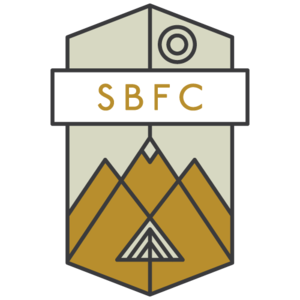What has been your career track thus far? Environmental Stewardship
Why did you want to intern with SBFC?
I looked for an internship to complete my senior capstone project. I wanted to challenge myself to work on the “front lines” of conservation.
I was attracted to the Foundation by the organization’s “boots on the ground” philosophy, it allowed me to achieve tangible results and to listen to the stories that people had to tell. As a Wilderness Ranger Intern I got the opportunity to gain perspective on the multiple dimensions of the Wilderness concept and what my professional work might look like.
What was the most poignant experience you had as an intern? There were truly dozens of experiences I had with SBFC that triggered great shifts in my perspective. I wish I could name them all. In one of my first hitches on the Payette, the Lead Steward and I were making our way off a burned-over peak when we spotted a storm plowing its way through the canyon toward us. Leaping down the trail with Ponderosas leaning and groaning in the wind, I felt an intimate excitement acknowledging my lack of control in the world. It was the first time I recognized that. While recreationalists often seek challenges from the terrain of a wild landscape, the most important challenge is learning to embrace and balance the sense of fear and awe while absorbed in a powerful place-this planet. Nature demands that we interact with wild communities with an acute sense of responsibility and humility.
How did the SBFC internship play a role in landing your first job out of college? I was hired as a Wilderness Research Technician in northeastern Nevada with the Great Basin Institute – three different Wilderness Areas. My SBFC Wilderness Ranger Intern training and experience prepared me for the requirements of the job. I collected data on campsite impacts in support of the Forest Service’s goals for the 50th Anniversary of the Wilderness Act. I was fully qualified to monitor sites, improve trails, record and report the information collected, and grasp the management challenges and history of Wilderness.
How did you use the information you learned while being an intern help you in your college work and/or your new career? The lessons I learned as an intern have remained with me to this day and Wilderness remains at the core of my heart. I carry with me an unrelenting appreciation for the hard work of stewardship and the care of the tools necessary to complete that work. I still find it imperative to listen to the stories and perspectives of those who have experienced protected lands and what it means to them individually. The Foundation instilled in me a great appreciation for neighboring rural communities and how they are affected by conservation, both positively and negatively. And above all, the family I found within the SBFC organization has become my gold standard for all my professional relationships.
What has been your career path post college graduation? Eager to return to the world that had inspired me, I took a seasonal position in northeastern Nevada as a Wilderness Research Technician in the Ruby Mountain-Jarbidge Ranger District. It was here that my love for wild places blossomed. I viewed Wilderness from new perspectives and across new landscapes. The following year, I hopped from living on an island in the Caribbean and volunteering with the National Parks, to a seasonal field support position in the White Mountain National Forest of New Hampshire with the Appalachian Mountain Club. I circled back to Vermont in late 2015 and began working in its "Northeast Kingdom", a sparsely populated, tri-county region that offers some of the wildest territory in the Green Mountain State. As the Conservation Assistant with the Northwoods Stewardship Center, I helped implement management goals on state forests and supervised eight crews on US Fish & Wildlife Refuges. Realizing I wanted to expand my professional experience to the protection of biodiverse and critical habitats, I signed an AmeriCorps year-term contract with The Nature Conservancy in Vermont. I was exposed to natural area management, conservation easement monitoring, and how both fit into regional and global contexts. In November of 2017 I was hired by the Nature Conservancy Chapter which is where I’m employed today. The NC organization protects 200,000 acres in Vermont. That doesn’t hold a candle to the nearly 4 million acres of the Selway Bitterroot-Frank Church complex, but my experience in Idaho still affects my approach to stewardship and my work with local communities to protect the pieces, patterns, and processes of a "wild" world.
Where do you see yourself in 5 years? No matter where I find myself in five years, geographically or professionally, I would hope to have contributed directly to the conservation of more regional corridors, core habitats, and avenues for visitors to experience the sense of wildness and ecological integrity of the land. I would like to feel confident in resilient landscapes where species and the natural communities they make up can move and “express” themselves without losing more pieces of the biological puzzle. This, to me, is the “wild”, and my work will always be dedicated to protecting it.


